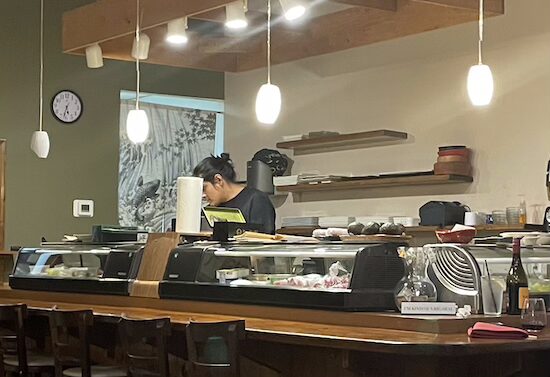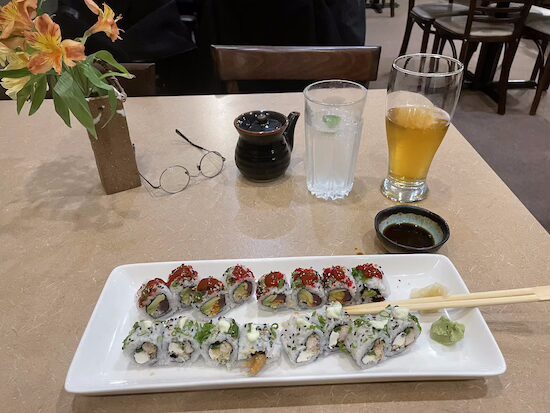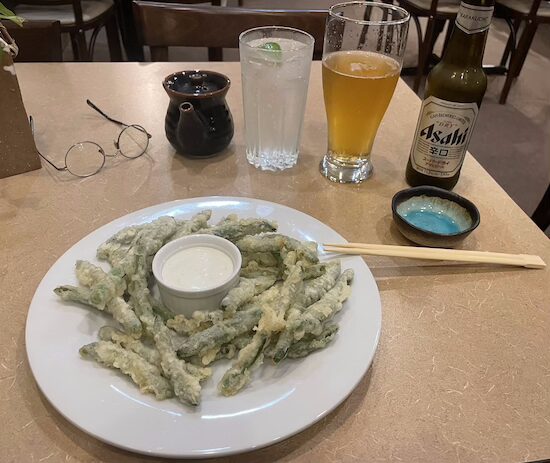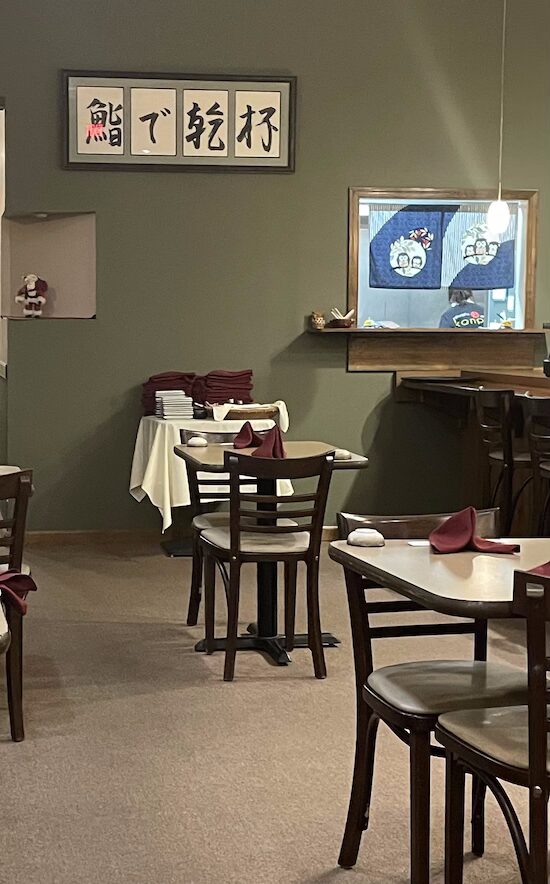Mark’s Score 9.5

During my career I had the good fortune to visit Japan on multiple occasions. I have traveled the length of Honshu Island. Before my first visit, I knew little of Japanese culture and even less about its cuisine. Over the years and in the course of many visits, I came to love both.
Japanese cuisine is a marriage of textures, colors, and tastes blended into a harmonious and perfect whole. The correct presentation of Japanese food is an artform and every bit as important as the food itself. Moving to the Delmarva, I resigned myself to suffer the fate of never enjoying authentic Japanese again, then I discovered Sushi de Kanpai. Much to my shock, Salisbury has an authentic Japanese restaurant that would easily be right at home in Tokyo’s Akasaka neighborhood.

Kanpai is owned and operated by Kumiko Suzuki a native of Shimani Prefecture, Japan. She has successfully replicated an authentic Japanese restaurant here in the most unlikely of places. So, what makes a Japanese restaurant authentic? To start, the best Japanese restaurants tend to be intimate. Kanpai is discretely tucked away in a little shop front on Main St. There are less than a dozen tables with a separate sushi bar seating less than ten people. You need to be able to watch the sushi chef cut the fish and roll the rice, to be considered authentic sushi.
The night I visited was sushi roll night. To create the perfect roll, you start with rice cooked to sticky perfection. There are as many versions of sushi rolls as there are fish in the sea. But a good sushi roll should combine a selection of foods that provides contrasting textures, and flavors. The rice should be rolled in a selection of spices and topped with condiments that add flavor but also add beauty to the dish. The rolls then must be sliced in perfectly equal segments and displayed on the plate so that the presentation is a work of art as well as a culinary masterpiece.

On my last visit, I thought three rolls would be too much food and two too little, so I ordered the green bean tempura starter. Tempura, to do it right, is much harder than it looks. The dish must be flash fried only to the point where the tempura is a very light golden color. The tempura itself should have a light, non-greasy taste and texture. The taste of the batter should be subtle, its main purpose is to add a delightful crunch to the dish. Their green beans were tempura perfection, I could have made a meal of just the beans.
This being a Japanese restaurant, I of course, washed it all down with a bottle of Asahi Super Dry. Asahi Super Dry and sushi are a marriage made in heaven. No other beer will do.
If you want to taste authentic Japanese food, you have to put this restaurant on your short list.


Leave a Reply